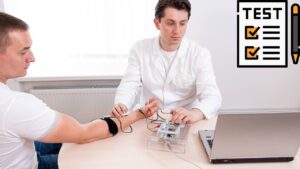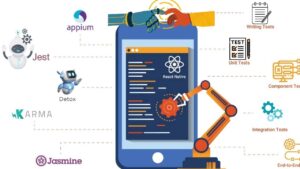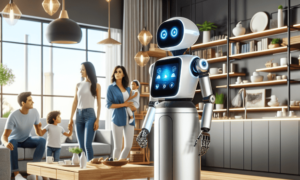Blended learning combines online educational materials with traditional classroom methods. It offers a personalized, efficient, and flexible approach to education.
Blended learning is revolutionizing the educational landscape by merging the benefits of digital media with direct teacher engagement. This innovative approach tailors to the diverse needs and learning styles of individuals, ensuring that education is more accessible and adaptable than ever before.
By embracing technology, blended learning not only broadens the scope of resources available to students but also provides them with the opportunity to learn at their own pace and comfort. This dynamic method of instruction supports the continuous evolution of teaching strategies and prepares students for a future where digital literacy is paramount. As the demand for versatile educational models grows, blended learning stands out as a key solution in enhancing student engagement and improving learning outcomes.
What Is Blended Learning?
Blended Learning is an education program that combines online materials and interaction with traditional classroom methods. It requires the physical presence of both teacher and student, with some elements of student control over time, place, path, or pace.
Combining Online and Offline LearningCombining Online And Offline Learning
Blended learning bridges the digital space with the physical classroom. Students engage with interactive courses online at their own pace and meet in classrooms for hands-on, teacher-guided work.
Benefits of Blended LearningBenefits Of Blended Learning
- Flexibility: Students can learn anytime and anywhere.
- Personalized Pace: Courses adapt to each student’s speed of learning.
- Higher Engagement: Interactive content keeps students interested.
- Better Resources: Access to vast online materials enhances learning.
- Cost-Effective: Reduces the need for physical materials and infrastructure.
- Instant Feedback: Online assessments provide real-time results.

Credit: www.commlabindia.com
Components Of Blended Learning
Blended learning is the perfect cocktail for modern education. It mixes online resources and face-to-face teaching. This combo creates an enriching experience. Let’s explore its key ingredients.
Online Learning
Online learning is a vital slice of the blended learning pie. It gives students a chance to learn at their pace. It also allows flexibility in time and location.
- Self-paced modules: Students can rewind and revisit content until they master it.
- Interactive activities: From quizzes to forums, online exercises keep learning fun.
- Accessible resources: eBooks and videos are just one click away.
In-person Learning
Face-to-face instruction adds a personal touch to education. It provides immediate feedback and support.
- Classroom discussions: These spark curiosity and enhance critical thinking.
- Hands-on experiments: They turn theory into practice effectively.
- Real-time assistance: Instructors can offer help right when students need it.
Integration Of Online And In-person Activities
The real magic happens when online and face-to-face elements blend seamlessly. This integration offers a cohesive learning journey.
| Online Component | Classroom Activity |
|---|---|
| Video Lecture | Group Discussion |
| Online Quiz | Lab Session |
| Virtual Simulation | Practical Application |
Integrating digital platforms with classroom sessions creates a balanced learning environment. Teachers can track progress online and tailor in-person activities to meet student needs.
Blended Learning Models
Blended learning combines traditional classroom and online education. Diverse models exist, each with unique features to cater to different needs. Let’s dive into the major blends:
Rotation Model
Students rotate through learning stations on a fixed schedule. This could mean switching between online and face-to-face instruction. The rotation model includes:
- Station-Rotation: Learners move within the classroom.
- Lab-Rotation: Learners switch between a lab and classroom.
- Flipped-Classroom: Learners study online at home and apply knowledge at school.
- Individual Rotation: Learners follow personalized schedules.
Flex Model
In the flex model, online learning is the backbone. Teachers provide support and interventions as needed. Activities are fluid, tailored to student progress.
Self-blend Model
With the self-blend model, learners add online courses to their traditional ones. This model empowers students to customize learning paths and expand subject choice.
Enriched Virtual Model
The enriched virtual model begins with online learning. Face-to-face sessions occur, but they’re not routine. Engagements with instructors enrich the virtual experience.
A La Carte Model
The a la carte model allows students to choose online courses that might not be available on campus. This model complements their school schedule, offering flexibility and customization.
Implementing Blended Learning
Blended learning combines online with in-person learning. To make it work, schools and trainers need a solid plan. Let’s dive into how to craft this educational cocktail effectively.
Identifying Learning Objectives
Begin by pinpointing what learners need to achieve. Learning goals guide the entire blended learning strategy. Make clear, specific, and measurable objectives. These goals shape the blend of activities and tools used.
Choosing Suitable Technologies
- Select user-friendly platforms that engage students.
- Ensure technologies align with the learning goals.
- Look for tools that track progress and give feedback.
Choose tools that enhance learning, not complicate it. A tool for every goal keeps tech simple and focused.
Structuring The Learning Path
Design a clear, flexible path that interweaves online and in-person sessions. List activities in logical sequences that build on previous knowledge. Use a balance that feels natural and keeps learners engaged.
Teacher Support And Training
Teachers must feel confident using new tools. Offer training in blended learning strategies and technology. Regular support ensures teachers can help students navigate the blend.
Challenges In Blended Learning
Embracing blended learning opens a Pandora’s box of hurdles to navigate. Understanding these obstacles is key to crafting effective educational experiences that benefit every student.
Access To Technology
Not all students have the same resources. This truth impacts blended learning. Quick and reliable internet and modern gadgets are musts. Yet, some students fall short. Schools must find ways to ensure equal technology access.
Managing Student Engagement
Engaging students online differs greatly from in-person methods. Teachers strive to keep digital learners focused. This task demands an arsenal of interactive tools and creative techniques.
- Vary content delivery — mix videos, quizzes, and discussions.
- Regular feedback — provide timely responses to keep students hooked.
- Collaborative activities — foster connectedness among peers.
Balancing Online And In-person Instruction
The struggle to blend online and face-to-face teaching is real. Educators must design cohesive lessons that align both worlds. A balanced approach ensures no student falls between the cracks.
| Online Instruction | In-person Instruction |
|---|---|
| Self-paced learning | Real-time collaboration |
| Flexible access | Hands-on activities |
| Technology reliance | Immediate support |
Evaluating Learning Outcomes
Measuring success in blended environments can challenge the best of educators. Tools that track and assess progress are essential. Transparent and effective evaluation methods empower learners and educators alike.
- Adaptive assessments that match learner’s pace.
- Real-time analytics to monitor ongoing performance.
- Portfolio projects that showcase practical application.

Credit: margaretkobewka.com
Success Stories Of Blended Learning
Blended learning combines traditional classroom education with digital media. This approach offers remarkable success stories across various educational settings. Let’s delve into inspiring examples, showcasing its impact on student achievement, engagement, and personalized learning experiences.
Improved Student Achievement
Blended learning boosts academic performance significantly. ‘The Flex Model’, implemented in a Californian high school, stands out. Students here surpassed their peers in traditional settings. Here’s an illustration:
| Year | Math Score Increase | Reading Score Increase |
|---|---|---|
| 2021 | 18% | 15% |
| 2022 | 22% | 20% |
Such outcomes suggest blended learning’s pivotal role in academic excellence.
Increased Student Engagement
- Interactive technology captures students’ interest.
- Learners participate more during online discussions.
- Real-world applications make lessons exciting.
A case study from a New York middle school reveals the effects. Students involved in a blended science curriculum expressed a 30% increase in engagement. They collaborated more and showed a keen interest in learning activities.
Personalized Learning Experiences
Blended learning tailors educational paths to individual needs. Students work at their pace, mastering topics thoroughly. Teachers, equipped with real-time data, address challenges promptly.
- Individual progress tracking empowers students.
- Customized resources cater to diverse learning styles.
In a Texas elementary school, a personalized math program allowed students to advance through concepts after mastering foundational skills. The result? A 40% improvement in math proficiency.
Advantages Of Blended Learning
Blended learning offers a host of benefits that cater to the diverse needs of today’s students. It’s a teaching method that combines traditional classroom experiences with digital media, creating a rich learning environment. Let’s dive into the advantages of blended learning and discover how it can be a game-changer in education.
Flexibility For Learners
One of the top benefits of blended learning is its flexibility. Students can access course materials anytime, anywhere, which is perfect for those with complex schedules or different learning speeds. It’s all about learning when it’s most convenient.
- Custom schedules: Allows students to learn at their own pace.
- Location independence: Study from anywhere with an internet connection.
- Access to resources: Materials are available 24/7 for review and practice.
Customized Instruction
Blended learning adapts to individual learning styles. With a mix of face-to-face coaching and digital platforms, educators can tailor the instruction to meet each student’s unique needs.
| Custom Elements | Benefits |
|---|---|
| Interactive content | Engages various learning styles. |
| Assessment tools | Track progress and provide feedback. |
| Adaptive learning paths | Focus on areas needing improvement. |
Combining The Best Of Both Worlds
Blended learning takes the best parts of in-person and online learning. By doing so, it creates an optimal learning experience that is both dynamic and effective.
- Social interaction: In-class sessions for collaboration.
- Technology: Digital tools enhance learning possibilities.
- Practical application: Real-world skills through hands-on experiences.

Credit: www.facebook.com
Disadvantages Of Blended Learning
Blended learning, while innovative, carries certain challenges. Not all experiences are smooth for educators and learners. Let’s explore some cons of this educational model.
Technological Challenges
Blended learning depends on technology. Sometimes, tech can fail. Glitches and technical issues may disrupt learning. Educators need to be tech-savvy. They must troubleshoot problems quickly. Schools need consistent tech support. It’s vital for a fluid learning experience.
Potential For Unequal Access
- Access varies widely. Some students may not have reliable internet.
- Not all homes have modern devices. This creates an unfair learning field.
Increased Responsibility On Learners
Learners must manage their time well. Blended learning needs self-discipline. With freedom comes responsibility. Not all students thrive under less supervision. Self-motivation is key to succeed in a blended environment.
Future Of Blended Learning
The Future of Blended Learning is bright, inviting, and brimming with potential. Schools and educational institutions are rapidly embracing a hybrid approach that combines online and in-person learning. This shift promises to foster a more personalized, engaging, and flexible learning environment. Let’s delve into key areas where blended learning is set to evolve.
Continued Growth And Adoption
Blended Learning is on an uphill trajectory. Classrooms around the world are transforming with technology. Learning is no longer confined to traditional settings. It promises to be:
- Flexible: Students learn at their own pace.
- Accessible: Online materials are available anytime, anywhere.
- Personalized: Tailored content meets individual needs.
Incorporation Of Artificial Intelligence
Artificial Intelligence (AI) stands at the forefront of educational innovation. AI will:
- Drive personalized learning pathways.
- Automate administrative tasks for teachers.
- Provide instant feedback to learners.
With AI, the potential for adaptive learning experiences is immense. Expect smarter learning environments that understand student needs.
Enhanced Learning Analytics
Learning analytics are empowering educators to make informed decisions. Advanced data tracking will lead to:
- Improved student outcomes.
- Insights into learning patterns.
- More effective teaching strategies.
Data becomes a tool, charting paths to success with precision. As analytics evolve, they will shape the future of learning.
Frequently Asked Questions Of Finding The Perfect Blend: Exploring Blended Learning
What Is Blended Learning?
Blended learning is an educational approach that combines online digital media with traditional classroom methods. It requires the physical presence of both teacher and student, with some element of student control over time, place, path, or pace.
How Does Blended Learning Benefit Students?
Blended learning offers flexibility, personalized pacing, and a mix of teaching methods. It caters to diverse learning styles and can lead to increased engagement and improved learning outcomes.
What Are The Key Components Of Blended Learning?
Key components of blended learning include in-person classroom activities, personalized online educational materials, and structured opportunities for students to have control over their learning pathways.
Can Blended Learning Improve Student Engagement?
Yes, blended learning can enhance student engagement by providing varied materials and interactive components. It encourages active learning and allows students to learn at their own pace.
Conclusion
Embracing blended learning can revolutionize education. It balances traditional teaching with digital advancements, offering personalized paths for learners. As we adapt to this model, the journey promises exciting, diverse educational experiences. Let’s innovate our approach, ensuring every student benefits from this perfect learning blend.








